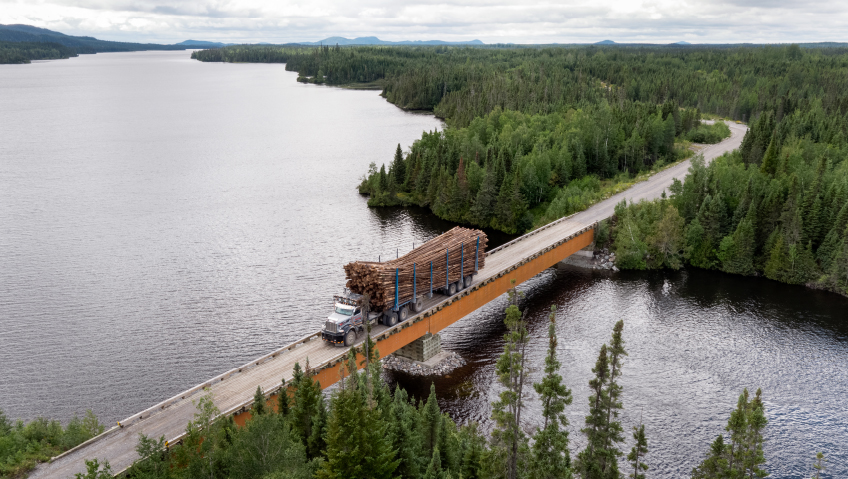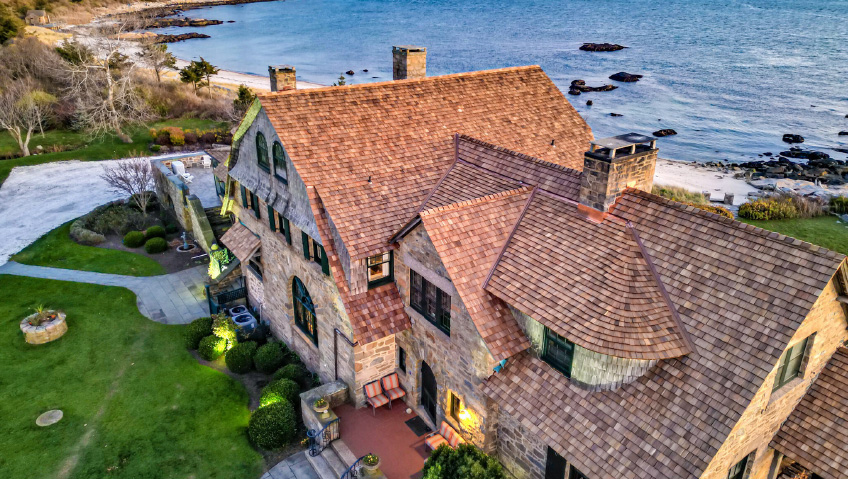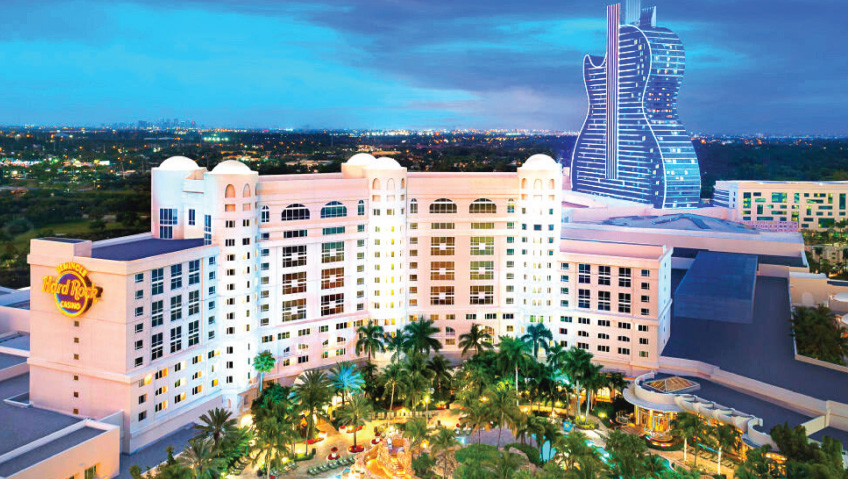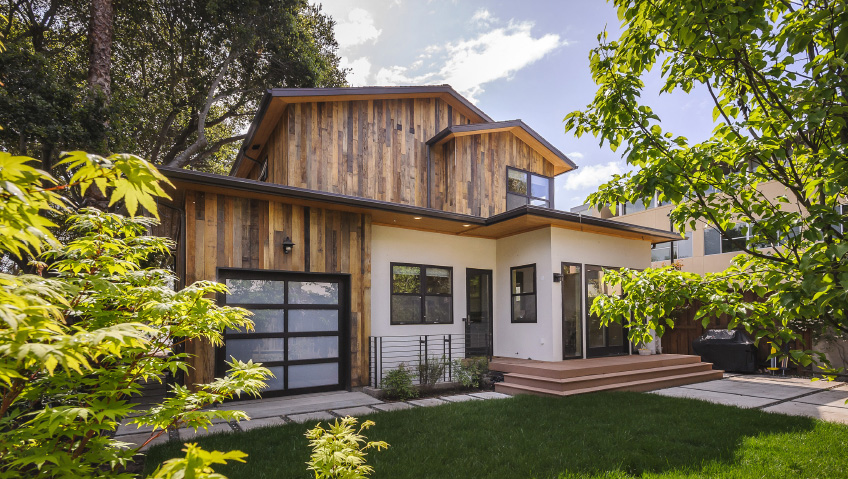Manufacturing and delivering projects from the Arctic Circle to the Gulf Coast while managing Canada’s second largest Forest Stewardship Council-certified (FSC) forest, lumbering along is not a performance option at Nordic Structures. Instead, this visionary company is driving innovation in the North American building industry by promoting sustainable turnkey solutions built of mass timber—a grouping of engineered wood products that includes glued-laminated beams, cross-laminated timber (CLT), nail-laminated and dowel-laminated timber (NLT and DLT, emerging as a sustainable alternative to traditional steel and concrete construction.
A family business
A family business through and through, Nordic Structures started manufacturing mining timbers in 1961 as Les Chantiers de Chibougamau, growing to become a significant lumber producer over the next four decades, before creating the Nordic Structures brand in 2001, bringing it to what it is today. “As a privately held company, we can adhere to a singular vision and a strong dedication to advancing the best and highest use of the product,” says Jean-Marc Dubois, Director of Business Development, of the company’s approach. Like many legacy companies, Nordic Structures started from humble beginnings—in this case, a team of five men and a portable sawmill.
While the third generation is coming up through the ranks, the founder of the company, Lucien Filion, 96, maintains an active presence in the operations, and is often found on the production floor discussing operational efficiency with shop supervisors.
Filion is a legendary trailblazer in this industry. In his time, he has guided the company through difficult times and together with its leadership team, led the firm to where it is today: a billion-dollar enterprise with a bright future. In fact, it was he who designed the proprietary production equipment that fabricates Enviro-Lam, Nordic’s unique small-block glulam product.
This process enables Nordic to make use of smaller components, including side-cuts and tree tips, effectively utilizing up to 20 percent more of the tree than possible through typical sawmilling operations. “Instead of leaving fibre in the forest to decay and become part of the carbon-positive cycle, we take this material and transform it into mass timber elements,” Dubois explains.
Staunchly committed to its regional community, the company recently partnered with local First Nations in establishing Cree Lumber, specializing in dimensional lumber. Today, it operates sustainably managed and harvested forests over more than 15 million acres—an area equal to Vermont, New Hampshire, and Massachusetts combined—while employing a team of over 1700 throughout Northern Quebec. Over the past decade, it acquired additional sawmills in Landrienne, LaSarre, and Bearn. And as part of its goal to be self-sufficient, Nordic completely rebuilt a shuttered Kraft pulp plant in Lebel-sur-Quevillon, whose wood chips are sourced from its own family of sawmills and whose operations return over 30 megawatts of carbon-negative electricity back to the regional grid from its operations.
Nordic utilizes the waste by-products of its operations to power its kiln operations, and boasts a total of only five percent fossil fuel usage in its mass timber manufacturing. The firm feels secure knowing it runs the company at optimal performance while protecting the environment so well that its operational global warming potential is negligible. Despite these worthy statistics, the company plans to reduce this number even further in the next five to ten years. Indeed, part of the company’s goal is to capture carbon in high volumes by sequestering greenhouse gases from the atmosphere in these mass timber elements. As a vertically integrated organization, the company has full control over the entire process, from the cultivation of its trees to the engineering of its mass timber, up to and including delivery and installation of the mass timber structure.
To fulfill this mission, its project and engineering division comprises 75 members of staff who make up four dedicated project teams alongside sales, estimating, and a research and development group. Staffing such a complex business is no mean feat; the company scouts globally for talent to ensure that it has the stable, quality labour force needed to run an operation of this size.
“At our nerve centre in Montreal, we have a virtual United Nations of designers and engineers. In addition to Canadian and American staff, we have people from Germany, Italy, France, Switzerland, and further afield,” says Dubois. “Our manufacturing facilities have also established hiring missions in the Philippines,” with scores of highly skilled workers relocating to the region to bolster the staffing needs of a growing business.
An ethos of innovation
The company’s penchant for innovation and a single-minded pursuit for value-added production manifested itself in the late 1990s when it began fingerjointing operations, then manufacturing I-joists for the North American residential and light-commercial market, and subsequently looked to manufacturing glue-laminated beams to complement their product mix.
A significant factor in the company’s innovation is the uniqueness of source material itself, and directly attributable to the harsh climate and difficult growing conditions of the northern boreal forest where the company manages over 15 million acres of timberland. The short growing season results in relatively small trees with very tight growth rings. While this meager fibre limits it to primarily producing 2×3 and 2×4 dimension lumber, this high density makes it ideal for engineered lumber products like I-joists, glulam beams, and cross-laminated timber, which Nordic Structures began manufacturing in 2010.
While the utilization of mass timber had been emerging in Europe, mass timber was a novelty that was not considered viable for domestic construction projects, and orders were not forthcoming. Eager to demonstrate the viability of mass timber structures, the firm decided to build one of its own, and designed, engineered, and erected the first mass timber multi-residential project in North America: a 24-unit, four-storey condominium complex erected in just 22 days with five men and a crane operator onsite. This experience underpins the company’s marketing approach: fully integrated solutions-based turnkey construction.
Approaching the concept with an open mind and a talent for out-of-the-box thinking, Nordic Structures has made huge strides toward proving that sustainable mass timber is part of the global answer to reducing the carbon footprint of the building industry and creating healthier, safer construction for the world’s communities.
As such, its expert craftsmen are adept at developing and successfully executing unusual, challenging projects where lateral reasoning, problem-solving skills, and hands-on knowledge are essential to deliver on the architectural vision of motivated designers. “We were the first North American manufacturer of cross-laminated timber panels. We have proven that we are up to the challenge when it comes to complex projects,” says Dubois of the company’s ongoing collaboration with leading architectural and structural engineering firms.
Thanks to continued improvements in design, manufacturing, and material technologies, the company brings innovation and quality of product to state-of-the-art processes in the construction of buildings that, traditionally, were made of concrete and steel. Not only is its mass timber more sustainable; it is also better for the physical and psychological health of those who construct such buildings and those who occupy them. In addition to mass timber’s biophilic properties, ambient temperature and moisture levels are naturally better balanced for human comfort throughout the seasons, giving these structures a better comfort profile than other building methods.
While it has proven ideal for commercial construction, mass timber is also being heralded by a growing cadre of enthusiasts in academic settings across North America. Nordic Structures’ products are featured in the John W. Olver Design Building at UMass Amherst, the first post-secondary mass timber structure in the U.S. Since then, Nordic has delivered projects at Ivy League schools UPenn, Princeton, Brown, and its sister college RISD.
Certainly, there have been many achievements in the company’s tenure. Nordic Structures constructed one of the largest postsecondary education buildings in Texas, at San Jacinto College in Pasadena. Then there’s the University of Michigan’s College of Pharmacy. “Nordic Structures’ suite of services and our product and approach are engaging people across North America because of our willingness to engage, provide solutions, and look outside the box,” Dubois says of the company’s knack for drawing top customers. “We’re not the only ones doing mass timber, but we’re the only ones doing it the way we do.”
Currently, construction is wrapping up at California College of the Arts in San Francisco, just in time to begin the first mass timber campus building at UCal, across the bay, in Berkeley.
Nordic Structures has also completed numerous projects for Canadian universities, including Limberlost at George Brown College, and Centennial College, both in Toronto, as well as scores of academic and athletic projects across Ontario, Quebec, and the maritime provinces. “It’s gratifying that more educational bodies are leaning toward carbon-negative buildings of mass timber, and the same is true for a growing number of data centres and other sectors aiming to follow the same trend.”
A new take on fire
Contrary to one’s obvious initial thoughts that wood is a fire hazard, CLT is surprisingly fire-resistant when the weight-bearing capacity and other requirements of walls and beams are correctly calculated in relation to the burning properties of the outer layer of the lumber used in building. That’s because fire typically causes a charred crust on the surface of the wood that can help protect the structure by slowing the penetration of heat into the matrix of beams and walls much better than other common construction materials will do.
While some may continue to harbour safety concerns regarding the combustibility of wood, Dubois assures us that its buildings typically exceed standard building and safety codes, holding up under high temperatures for as long as three hours—longer than steel and concrete would do in many cases.
While the company agrees that concrete and steel play a fundamental role in aspects such as foundations, the logic is that capturing carbon inside concrete works at cross purposes; instead, wood goes much further in curbing that issue as ultimately, nature knows best. “There’s a lot to be said for biomimicry,” says Dubois.
With technology becoming increasingly sophisticated, the company is encountering possibilities for growth that were unfathomable just a few years ago. Dubois points out that the software industry has revolutionized construction, making it possible for engineers to collaborate on projects from across the globe. Improved software integration also means tighter tolerances and significantly improved efficiency, not just increased capabilities. In this way, once the design is complete and all details are taken care of, mass timber construction components can be assembled much easier, significantly faster, and with less labour than ever before, certainly in comparison to traditional construction.
For this reason, Dubois believes that six- to eight-storey buildings are ideally built from mass timber. With buildings as high as 11, 13, and 25 storeys already built from this material, mass timber has asserted its power and benefits, setting a clear example of what is safely achievable.
3,000 times over
While Dubois does not believe that all construction should employ wood, his case for using more of this material in the right settings is watertight—especially considering that Nordic mass timber has been successfully used in over 3,000 completed projects, including Toronto’s T3 Bayside, the largest mass timber office building in North America.
With a team as sterling as its product, Nordic Structures has much to be grateful for. “I don’t like our team; I love them. The people I work with are tremendously visionary. They’re ingenious,” Dubois says, describing the real experience of solving challenges while standing shoulder-to-shoulder with some of the industry’s best.
In his opinion, driven by a genuine appreciation of excellence, this passionate group is building a new state-of-the-art industry, the likes of which has not been seen before.
As building codes get up to speed with the possibilities of mass timber, the company looks forward to the positive changes this building method is expected to bring across the board, particularly in educational facilities and in rebuilding and enhancing inner city and downtown spaces that had been left to decay.
In essence, thanks to its fast and efficient systems, mass timber appears to be the silent revolution that sustainable construction has been searching for. Knock on wood.






